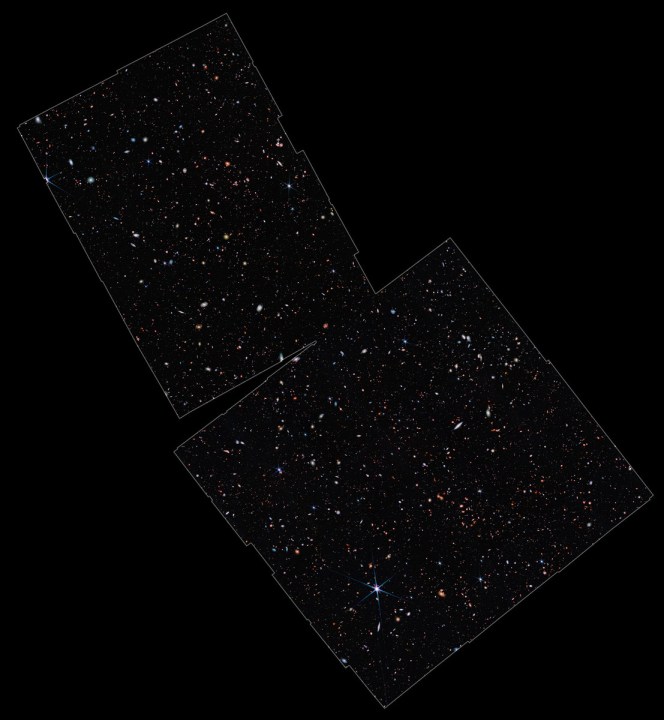The James Webb Space Telescope was designed to, among other things, look back in history to search out some of the earliest galaxies ever to exist. Now, new research has provided confirmation that Webb identified some of the oldest galaxies yet, estimated to be 13.4 billion years old.
This is early-release research, meaning it has not yet been peer reviewed, but it gives an indication of what kinds of discoveries are possible with Webb. The data comes from a survey called the JWST Advanced Deep Extragalactic Survey (JADES), an international collaboration using Webb’s instruments to observe the same area of the sky that Hubble previously imaged in its famous Ultra Deep Field.

The advantage of looking at the same area of the sky imaged by Hubble is that it enables the researchers to identify galaxies that are visible in Webb’s infrared range but invisible in Hubble’s optical range. That indicates that galaxies are highly redshifted, meaning their light is shifted to the redder end of the spectrum due to the expansion of the universe. And in principle, the higher the redshift, the older the galaxy.
This is how researchers are able to pinpoint the oldest galaxies visible in a deep field image. However, researchers then need to confirm these findings as it’s possible for younger galaxies that are closer to us to appear as if they are actually much older. That’s where the new research comes in, as it used spectroscopy to break down the light from these early galaxies into different wavelengths. This shows a distinct “fingerprint” for each galaxy which helps to confirm that it actually is an early galaxy and not a nearby one.
Of the potential earliest galaxies discovered so far, this research has confirmed that four of these have a redshift of above 10, and two have a redshift above 13. That indicates these oldest galaxies come from a time when the universe was less than 400 million years old.
“For the first time, we have discovered galaxies only 350 million years after the big bang, and we can be absolutely confident of their fantastic distances,” said co-author Brant Robertson of the University of California, Santa Cruz, in a statement. “To find these early galaxies in such stunningly beautiful images is a special experience.”



